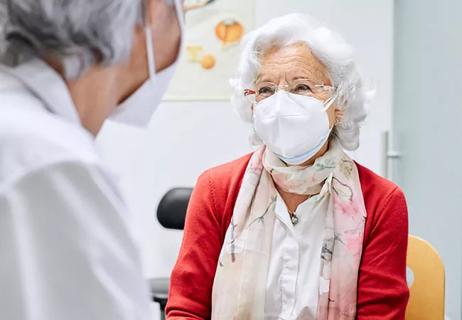Insights from co-author of a unique document on a vulnerable patient population

A new scientific statement from the American Heart Association (AHA) tackles a complex and often overlooked aspect of cardiac intensive care: managing the unique needs of the geriatric population.
Cleveland Clinic is a non-profit academic medical center. Advertising on our site helps support our mission. We do not endorse non-Cleveland Clinic products or services. Policy
Entitled “Older Adults in the Cardiac Intensive Care Unit: Factoring Geriatric Syndromes in the Management, Prognosis, and Process of Care,” the first-of-its-kind document was published in Circulation (2020;141[2]:e6-e32).
“When you walk into a cardiac intensive care unit [CICU] these days, most of the patients you see are in the geriatric age group,” observes one the AHA statement’s co-authors, Venu Menon, MD, Section Head of Clinical Cardiology at Cleveland Clinic and Director of the Cardiac Intensive Care Unit. As the statement points out, about two-thirds of all individuals with cardiovascular disease (CVD) are over age 60, and more than 85% of people over age 85 live with some form of CVD.
While CICUs specialize in acute care, they are not designed to address the broader health challenges in older adults that can complicate time-sensitive, life-saving treatments that are delivered in this setting. “We now have a number of therapies that can help patients with severe acute hemodynamic instability,” Dr. Menon says. “But their effects can differ substantially between older and younger adults. Older adults have greater comorbidities and less reserve. As cardiologists, we tend to focus on the treatment rather than on the aging process and how it interacts with the treatments we provide.”
The well-referenced, 27-page AHA statement details the impact of the common geriatric phenomena of delirium, frailty, multimorbidity and polypharmacy — along with the CICU-related challenges of immobility, caloric insufficiency and environmental factors such as excessive lights and noise.
The document provides a rationale and specific guidance for early mobilization, minimization of sedation, reorientation, use of sensory-enhancing devices like hearing aids and glasses, nutrition support, and physical/occupational therapy in preparation for cardiac rehabilitation.
The statement also focuses on the effects of aging on specific cardiovascular conditions and their treatment, including acute myocardial infarction, decompensated heart failure, acute valvular heart disease, acute aortic syndrome and pulmonary embolism. Latter sections also cover end-of-life and shared decision-making, ethical considerations and evolving CICU concepts including transitional care, the role of multidisciplinary teams, and preventive and palliative care.
The statement is broadly informed by the reality that aging impacts the balance between treatments undertaken to prolong life versus those that improve quality of life. “As patients get older, prolonging life becomes a smaller piece of the pie, with more done to improve quality of life,” Dr. Menon notes. “In this vulnerable population, the first thing to think about before any cardiac procedure, especially if it’s invasive, is to estimate the potential benefits in terms of quality of life.”
But weighing such considerations can be difficult because studies often exclude older adults. “Procedures are typically studied in middle- to older-age people who are otherwise healthy, and that’s how the benefits and risks are assessed,” Dr. Menon explains. “We have to take that into account when translating the findings to the elderly.”
He weighs in as follows on some of the common geriatric syndromes addressed in the AHA statement:
The AHA statement concludes by identifying research opportunities to close knowledge gaps around CICU care of older adults and by calling for a thoughtful approach to care in the meantime.
“There is no doubt we should treat the elderly and treat them aggressively, but there should be clear goals to that treatment — to prolong life in the few conditions where we can, and to improve quality of life,” Dr. Menon observes. “In pursuing those goals, we need to be aware of the ways that old age can increase the potential for complications.”
For patients who are expected to recover, Dr. Menon stresses that rehabilitation services are key. “CICU care for elderly patients isn’t limited to physicians and nurses,” he says. “It includes a team of cardiac rehabilitation specialists, physical/occupational therapists and speech therapists — with transition to a skilled nursing facility, if appropriate.”
For patients who are unlikely to recover, Dr. Menon says shared decision-making around end-of-life and palliative care can effectively complement the care provided in the CICU: “There are times when, instead of doing invasive procedures, we should be supporting our patients and making them comfortable, to ensure their last days are lived with dignity.”

Pilot study confirms feasibility of conducting additional research on the novel treatment

Longer hospitalization does not mean a safer, faster recovery for patients age 70+

Structured data helps identify older adults at risk for poor outcomes, defines patients who require more comprehensive assessments

Self-administered tool can be completed in 10 minutes in waiting room

Social prescribing turns leisure activities into good “medicine”

A large geriatric study aims to find the answers

Analysis underscores how telehealth can help pinpoint elder abuse